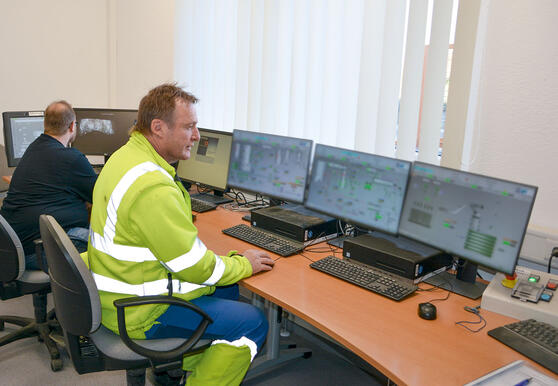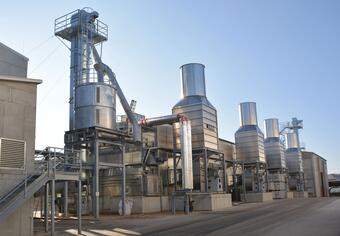JRS: More than 13,000 tons of CO2 Savings


Through Innovative JRS Biomass Power Plant Complex with Connected Highly Efficient Large-Scale Drying Plant
With an innovative, newly designed plant complex consisting of a biomass power plant and a large waste heat drying plant, a piece of the sustainable 'green' JRS production philosophy was successfully put into operation at the Rosenberg-Holzmühle plant in autumn. Managing Director Josef Otto Rettenmaier is highly satisfied with the results of the extensive construction work: "We approached the task with an ambitious planning approach. We are therefore all the more pleased that we have now been able to achieve far more than 13,000 tons of CO2 savings with the new plant. Further positive side effects come on top. In addition to the functional tasks of our plant-based products, sustainability plays a very important role in our corporate philosophy. If you take the average consumption values of a private car as a basis, the 13,000 tons of CO2 saved could be used to drive almost 74 million km by car every year, depending on the calculation method.
After thorough examination, the JRS planners focused on an innovative overall solution for new buildings, which was optimized according to the latest technological, ecological, logistical and economic aspects. JRS head of technology Dr. Michael Hempe on the task: "The goals were CO2 savings, an improved energy balance and shorter transport and supply routes. The planning specialists of the JRS mechanical and plant engineering team tailored the new plant to the complex requirements of the Holzmühle plant".
The heart of the plant is a biomass power plant for combined power/heat generation, which is operated with renewable, plant-based energy sources in a sustainable manner because it is CO2-neutral. Among the energy sources are bark, forest remainder wood (thinning and crown wood) and cut remainders from the landscape and embankment care in the regional traffic. The residual heat generated during the operation of the power plant is used as a sustainable energy source for the new large belt drying plant, which is located directly next to the power plant. This will replace the previous drum drying plants, which were separately heated with fossil energy, and create additional, further drying capacity for wood fiber products.
With the new plant complex, JRS is committed to going far beyond the standard industrial requirements in order to set a sustainable example in terms of massive CO2 savings with the 'green' JRS Plant Fiber Technology and the production technology required for this. With special soot and dust filters, elaborate sound insulation and computer-controlled plant management, all conceivable parameters for environmentally friendly operation are also met. At the same time, the plant ensures sufficient throughput capacity to be able to produce plant fiber products sustainably at the site in the future. Another positive aspect is that, despite the increased capacity, the new plant constellation will not lead to an increase in the number of suppliers.
JRS planners benefit from decades of practical experience in the field of wood fiber production. JRS relies on its own machine and plant engineering know-how to secure its technological lead. In addition to wood fiber products for industry and pet supplies, for which the new dryer system is required, JRS produces a wide variety of cellulose fibers for technical applications at its Holzmühle site. The production of food or pharmaceutical products is carried out at other specialized sites of the JRS Group. In total, more than 4000 employees at over 90 production and sales locations worldwide are currently involved in JRS plant fiber and cellulose technology.







